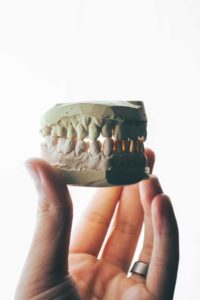
What Is Tooth Decay?
Tooth decay is exactly what it sounds like: tooth damage. More specifically, it affects the enamel of your teeth and can cause cavities. Cavities are holes in your teeth that may lead to infection or severe pain. Eventually, cavities may lead to tooth loss if left untreated.
It’s one of the most common health issues across the world, and the effects can be detrimental to your overall health.
How Do Dentists Treat Tooth Decay?
Only a dentist can properly treat tooth decay. Treatments depend on the severity of the decay and include:
- Fluoride treatment: This helps the enamel repair itself, but it’s only effective for very early tooth decay.
- Filling: This standard treatment removes the tooth decay and restores the tooth with appropriate material.
- Root canal: Root canals for more severe cavities. The dentist removes the tooth decay, cleans the root and inside of the tooth and uses a temporary filling. You come back later for a crown or permanent filling.
- Extraction: If the decay is too severe for any of the other solutions, your dentist may pull the tooth. They may replace the natural tooth with a bridge or implant.
Can You Have Tooth Decay but Not Know It?
Yes, most people don’t realize they have tooth decay until it becomes a bigger problem (e.g. a cavity or infection). Simple daily activities can cause tooth decay. These include things like eating sweet foods, drinking sodas or other beverages with sugar or neglecting dental hygiene. The ADA recommends you brush twice a day and floss daily.
Can You Look for Signs of Tooth Decay at Home? Do You Need a Dental Examination?
At first, you may not notice any signs of tooth decay. Over time, though, you may feel pain or sensitivity, particularly when you eat cold or hot foods or sweet foods. When you look in a mirror, you may see small brown or white spots on your tooth. Sometimes, you can even see a cavity.
If tooth decay causes an infection, you may notice these signs, too. Severe pain, swelling (especially in your cheek or jaw) and fever are all signs of a tooth infection.
These signs are all later signs of tooth decay, however. To stop tooth decay early, you need regular dental cleanings and exams. If you don’t see a dentist until you notice signs of tooth decay, it may be too late to save the tooth.
You can schedule an appointment with a dentist in Dallas to help prevent and detect tooth decay.
Content found on this blog is intended for educational purposes only and should not be used as a substitute for professional judgement, advice, diagnosis, or treatment. Please speak with a professional if you have concerns about your oral health.